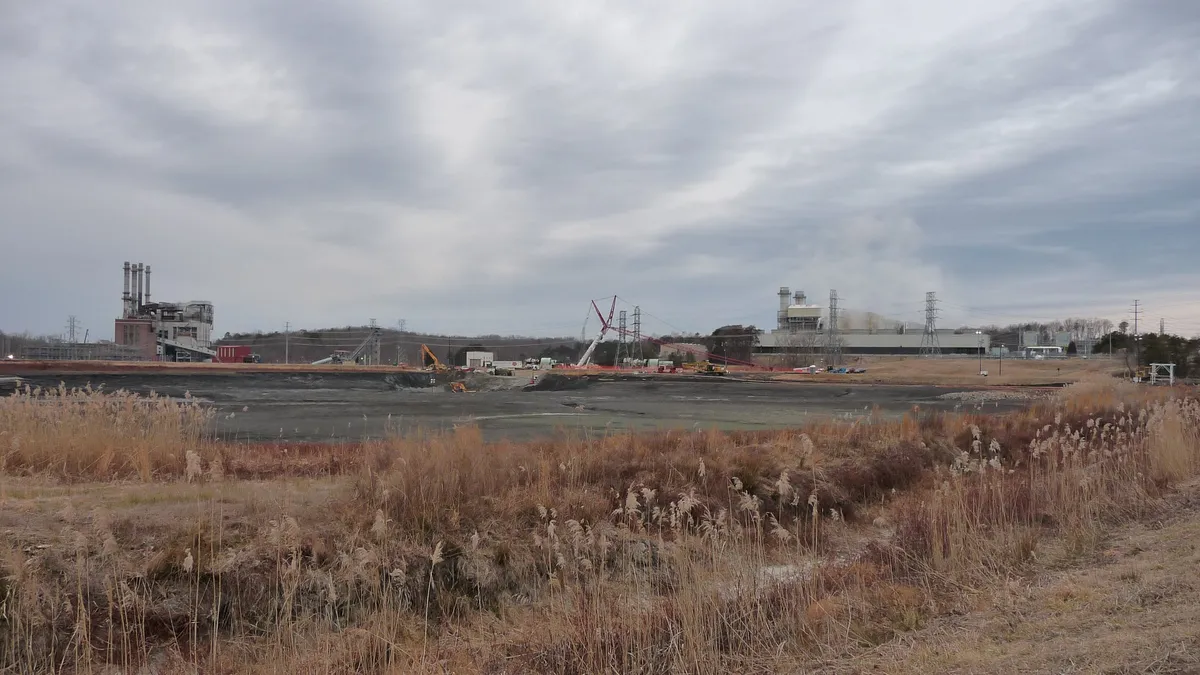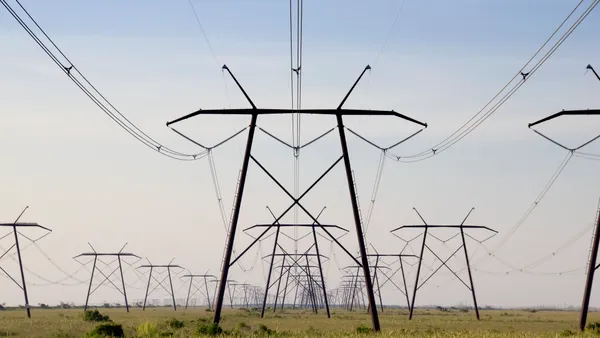Dive Brief:
-
The Environmental Protection Agency on Wednesday proposed requiring owners of inactive coal ash ponds, landfills and other fill sites at shuttered power plants to monitor for groundwater contamination and clean it up if it occurs. The requirements are essentially the same as operating power plants face.
-
The proposal also covers online coal-fired power plants with surface impoundments and landfills that are currently exempt from the agency’s coal ash regulations.
-
“For far too long, a large portion of toxic coal ash around the U.S. was left leaching into drinking water supplies without any requirement it be cleaned up,” said Lisa Evans, senior counsel at Earthjustice, which led litigation against the EPA’s exemptions for legacy coal ash sites. The proposed rule leaves some ash sites uncovered and should be expanded, the group said.
Dive Insight:
When the EPA issued its coal ash regulations in October 2015, it exempted ponds and landfills that were used at power plants that had retired before the rule took effect.
The EPA expects about 280 coal ash ponds and landfills will be affected by the proposal, which the agency plans to issue as a final rule in June 2024. There are more than 1,000 active coal ash disposal sites, according to the EPA.
Coal ash contains mercury, cadmium, chromium and arsenic, which are linked to cancer and other health problems, according to the EPA.
“This proposed rule will help EPA further ensure that the communities and ecosystems closest to coal facilities are sufficiently protected from harm from groundwater contamination, surface water contamination, fugitive dust, floods and impoundment overflows, and threats to wildlife,” the agency said in the proposal.
Neighborhoods near landfills and legacy coal ash ponds, or impoundments, are disproportionately occupied by people already facing elevated environmental risks, the EPA said.
“Ensuring the health and safety of all people is EPA’s top priority, and this proposed rule represents a crucial step toward safeguarding the air, groundwater, streams, and drinking water communities depend on,” EPA Administrator Michael Regan said in a statement. “Many of these communities have been disproportionately impacted by pollution for far too long. This proposal will better protect their health and our environment, and it will reflect our broader commitment to reduce pollution from the power sector in a way that ensures a reliable, affordable supply of electricity.”
Legacy coal ash ponds are more likely to be unlined and unmonitored, making them more prone to leaks and structural problems compared to those at operating power plants, the agency said.
The areas affected by the proposal include 127 legacy coal ash surface impoundments at 59 facilities; 134 landfill “units” at 82 facilities; and, 19 landfills that are already regulated, but which have waste in contact with groundwater, according to the EPA.
Many coal plant owners avoided requirements to clean up groundwater by blaming nearby unregulated dumps for pollution detected at their sites, according to Earthjustice.
“The EPA would end this practice by requiring site owners to monitor and clean up all coal ash at a given site, rather than trying to regulate each dump at a site individually,” the group said.
According to Earthjustice, some power plants affected by this aspect of the proposed rule include the Tennessee Valley Authority’s Bull Run Fossil Plant in Tennessee; the Four Corners power plant in New Mexico, which is majority owned by Arizona Public Service; and the Stanton Energy Center in Florida, owned by the Orlando Utilities Commission.
Some other utilities affected by the proposal include PacifiCorp, Xcel Energy and American Electric Power, according to an Earthjustice map of coal ash sites.
The proposed rule doesn’t go far enough, according to Earthjustice. It doesn’t cover ponds that did not have water in them as of the original rule’s effective date or landfills at former coal plant sites that do not also have legacy ponds, the group said.
The proposed rule is driven by an August 2018 U.S. Court of Appeals for the District of Columbia Circuit decision vacating the exemption for inactive surface impoundments at inactive facilities.
The EPA plans to take comments on the proposal until July 17.














